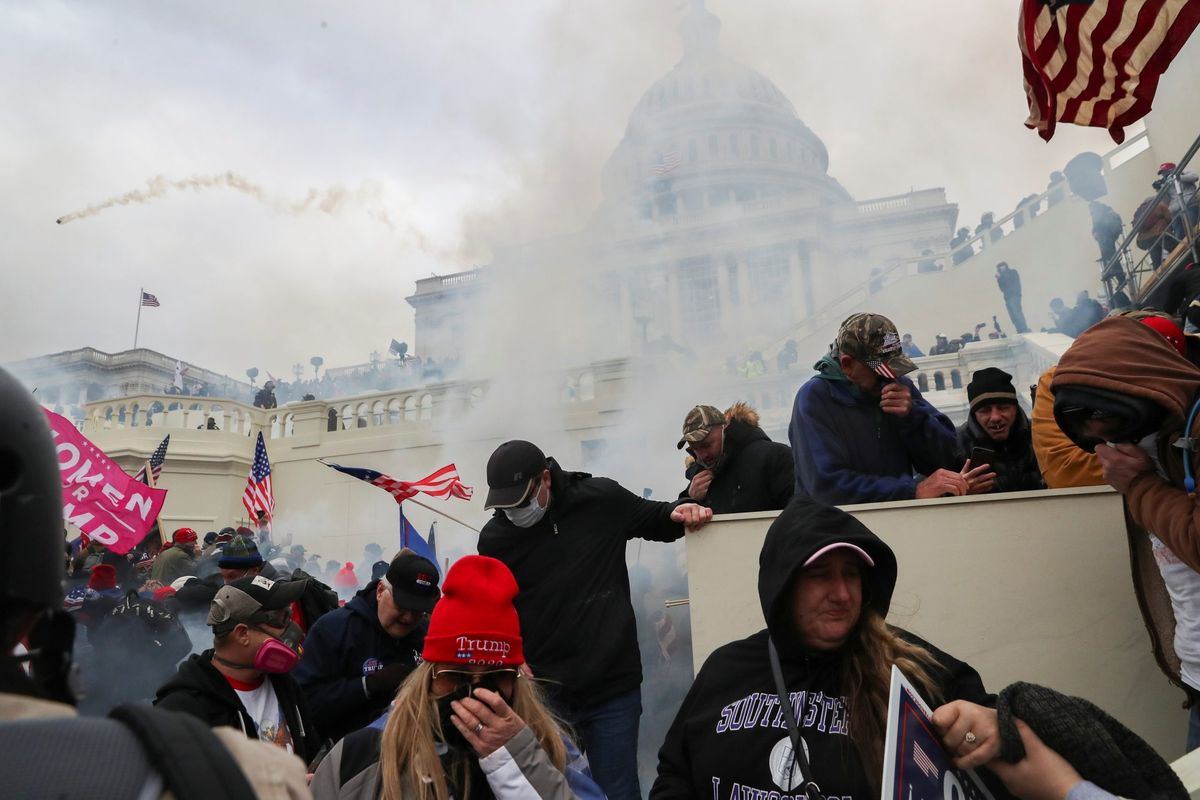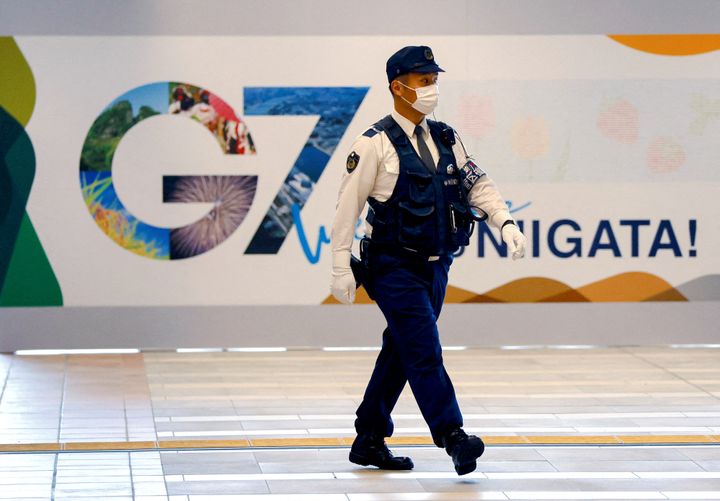Where was the National Guard during the attack on the Capitol?

A few minutes every morning is all you need.
Stay up to date on the world's Headlines and Human Stories. It's fun, it's factual, it's fluff-free.
It took the Pentagon roughly three hours to offer the full-fledged services of the National Guard. In those three hours, the Capitol building was breached.
On Wednesday, January 6, when members of the United States Congress gathered to certify the electoral college vote for President-elect Joe Biden, a group consisting of thousands of Trump supporters stormed the Capitol building.
The police in the area were easily overwhelmed by the sheer number of rioters, who quickly breached what is thought to be one of the most secure places in the world. For hours, supporters of the president broke windows, roamed the Capitol halls and rummaged through representatives’ desks until support from the National Guard arrived and a curfew was put into effect.
Several factors contributed to why it took the National Guard so long to respond to the attack on the US Capitol.
The National Guard’s role
The Army National Guard serves dual purposes for both the federal and the state government. The governor of a state can call on the National Guard to help with “local or statewide emergencies, such as storms, fires, earthquakes or civil disturbances.”
In 2020, the National Guard has been called on to maintain order in a variety of situations.
Last summer, over 17,000 troops were deployed in 23 states during protests in response to the death of George Floyd, a Black man killed by police in Kenosha, Wisconsin. The roles the National Guard played in each state was largely of support of local police.
“We’re here to help and assist local authorities,” Air Force Gen. Joseph Lengyel, chief of the National Guard Bureau, told the Military Times. “Our troops are trained to protect life, preserve property and ensure people’s right to peacefully demonstrate.”
In August of 2020, National Guardsmen and women from multiple states assisted local efforts to control the California wildfires. They offered not only manpower, but helicopters with water buckets, C-130 aircrafts capable of dropping 3,000 pounds of fire retardant and drones responsible for detecting fires and assessing their damage.
The DC National Guard can be thought of as its own separate entity. It does not have the same dual role of serving both state and federal governments, but only answers to the president.
“This authority to activate the D.C. National Guard has been delegated, by the President, to the Secretary of Defense and further delegated to the Secretary of the Army,” states the website of the DC National Guard.
Washington Mayor requested National Guard before riots
In preparation for possible violence, Washington Mayor Muriel Bowser requested a limited National Guard deployment for traffic control and to support local law enforcement. At a press conference, Bowser explained her request of federal authorities, saying, “we will do what we must to ensure all who attend remain peaceful.”
It was later revealed that the Pentagon restricted Washington, DC’s use of guardsmen and prohibited them from carrying ammunition or riot gear. The guardsmen and women would only be allowed to interact with protesters in order to defend themselves.
Capitol building overrun
Before the Capitol building was overrun on January 6, President Donald Trump held a “Save America” rally in front of the White House.
“We’re going to have to fight much harder,” Trump announced, urging supporters to march to the Capitol building to “cheer on our brave senators and congressmen and women.”
“We’re probably not going to be cheering so much for some of them,” the president added, “because you’ll never take back our country with weakness. You have to show strength, and you have to be strong.”
After the rally, the crowd walked the 16 blocks to the Capitol, surrounding it with members of Congress huddled inside. The Capitol and Washington police failed to hold Trump’s supporters back and hundreds got through the Capitol doors, ultimately ransacking the building. What many had thought would be a peaceful demonstration had instead been fomenting all week long on social media, with many pro-Trump forums promising violence.
One major issue was that the Capitol Police did not request aid directly from the DC National Guard. Their limited role offered no protection to the Capitol building itself.
When a request for additional National Guard forces had been made, Washington Post reporter Aaron C. Davis tweeted, “A source tells me The Defense Department has just denied a request by DC officials to deploy the National Guard to the US Capitol.”
https://mobile.twitter.com/byaaroncdavis/status/1346908166030766080
On Wednesday afternoon, Capitol Police Chief Steven A. Sund asked for help from the National Guard, a Washington official told The Washington Post, “An official from the [office of the] secretary of the Army said that wasn’t going to be possible.”
In an interview with The Washington Post, Mayor Bowser said she “made it perfectly clear that they needed extraordinary help, including the National Guard. There was some concern from the Army of what it would look like to have armed military personnel on the grounds of the Capitol.”
It took the Pentagon roughly three hours to offer the full-fledged services of the National Guard. In those three hours, the Capitol building was breached.
Maryland Governor Larry Hogan also requested aid from the National Guard. He told The Washington Post the Maryland National Guard was ready to help, but Major General Timothy Gowen, who is in adjunct general of the division, was “repeatedly” told no by the Pentagon.
Eventually, Vice President Mike Pence, who was inside the Capitol building as it was surrounded, mobilized the National Guard, not President Trump.
In a statement released on January 7, the Department of Defense responded to requests from the mayor at about 2 p.m. and Acting Defense Secretary Chris Miller immediately called up 1,100 members of the DC National Guard.
Army Secretary McCarthy said, “By 7:15, both chambers and leadership offices were cleared, and members were able to return to business, and we began the planning for the following day.”
National Guardsmen and women remain at the Capitol at the request of Mayor Bowser and will remain there until President-elect Biden’s inauguration on January 20.
Have a tip or story? Get in touch with our reporters at tips@themilsource.com




Comments ()